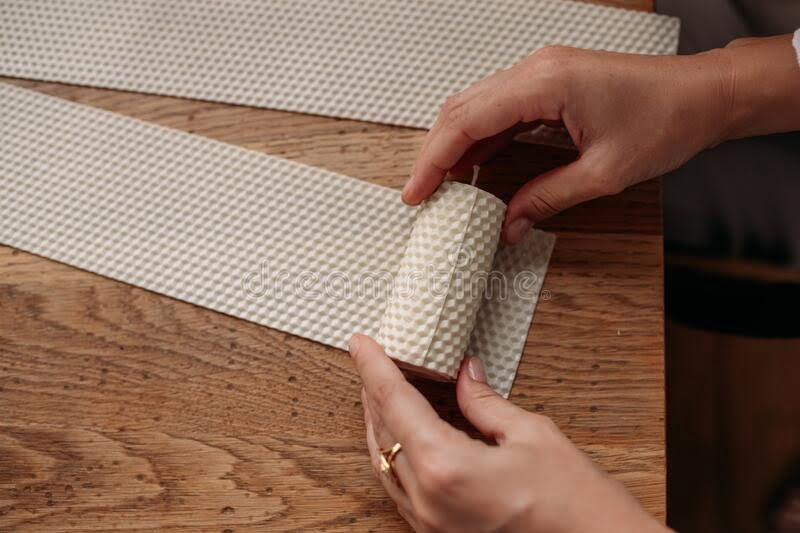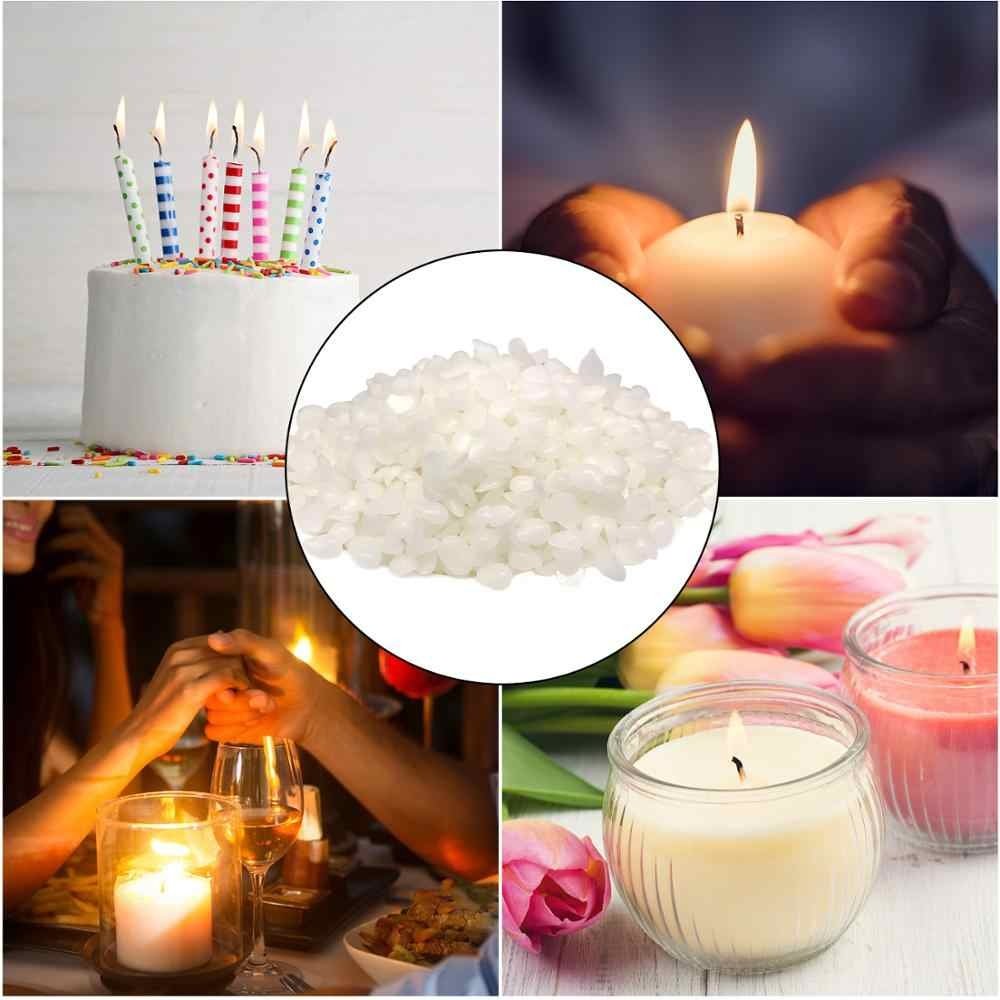Paraffin wax is a commonly used substance in the art of candle making. Derived from petroleum, this versatile wax is known for its easy-to-use nature and its ability to hold fragrance and color well. In this article, we will delve into the world of paraffin wax and explore its role as a general-purpose candle making wax.
We will start by understanding what paraffin wax is and where it comes from, shedding light on its origins and composition. Then, we will explore the process of making general-purpose candle making wax from paraffin wax, highlighting the techniques and steps involved in creating this essential material for candle crafting.
Furthermore, we will discuss the advantages and benefits of using general-purpose candle making wax, emphasizing its unique qualities that make it a popular choice among candle makers. Additionally, we will delve into the common uses of general-purpose candle making wax in candle making, showcasing its versatility in producing various types of candles.
Throughout this article, we will also touch upon different grades and types of general-purpose candle making wax, as well as safety precautions and best practices when working with paraffin wax. Finally, we will compare general-purpose candle making wax to other types of candle making waxes and provide valuable tips and tricks for successful candle making with this particular material.
The Process of Making General Purpose Candle Making Wax From Paraffin Wax
Paraffin wax is a widely used material in the candle making industry, known for its affordability and ease of use. But how exactly is general purpose candle making wax created from paraffin wax?
Refining Process
The process begins with crude oil, which contains a mixture of hydrocarbons. Paraffin wax is derived from the dewaxing and refining of this crude oil. During the refining process, the oil is heated and then cooled to allow the paraffin wax to separate from other materials.
Additives and Blending
Once the paraffin wax has been extracted, it goes through a blending process where additives are mixed in to create the specific qualities needed for candle making. These additives can include colorants, fragrance oils, and UV inhibitors.
Molding and Packaging
After the refining and blending processes are complete, the general purpose candle making wax is ready to be poured into molds or sold as blocks or pellets for further processing by candle makers. The final product is then packaged and shipped out to suppliers for use in creating beautiful candles for consumers.
Overall, the process of making general purpose candle making wax from paraffin wax involves several steps to ensure that the final product meets the requirements of both manufacturers and end-users.
Advantages and Benefits of Using General Purpose Candle Making Wax
General Purpose Candle Making Wax, also known as paraffin wax, is a popular choice for candle making due to its numerous advantages and benefits. This section will explore the advantages and benefits of using general purpose candle making wax, shedding light on why it is a preferred option for many candle makers.
Consistent Melting Point and Scent Throw
One of the key advantages of using general purpose candle making wax is its consistent melting point. This means that the wax will melt evenly and consistently, allowing for a smooth and even burn when the candle is lit. Additionally, paraffin wax has excellent scent throw, meaning it can effectively carry and distribute fragrance throughout the entire room when the candle is burning. This makes it an ideal choice for scented candles.
Excellent Molding Properties
Another benefit of general purpose candle making wax is its excellent molding properties. Paraffin wax can hold intricate shapes and details, making it versatile for creating different types of candles such as pillars, votives, and container candles. Its ability to easily release from molds also makes it a favorite among candle makers.
Affordability and Accessibility
General purpose candle making wax is widely available and relatively affordable, making it accessible to both hobbyists and professional candle makers alike. Its affordability does not compromise its quality, as it still delivers excellent results in terms of burn time, scent throw, and overall performance. The accessibility of paraffin wax also means that it can be easily found in stores or online suppliers, making it convenient for those looking to start or expand their candle making endeavors.
Common Uses of General Purpose Candle Making Wax in Candle Making
General purpose candle making wax, also known as paraffin wax, is widely used in the candle-making industry due to its versatility and affordability. This type of wax is derived from petroleum and undergoes a process of refinement to create the final product. Once the paraffin wax is ready, it can be used for various purposes in candle making.
Common uses of general purpose candle making wax in candle making include:
- Creating pillar candles: Paraffin wax is often used to make pillar candles due to its ability to hold its shape and provide a smooth finish.
- Making container candles: General purpose candle making wax is also ideal for creating container candles as it adheres well to the sides of the container and has a good scent throw.
- Making votive and tea light candles: The versatility of paraffin wax allows for the creation of votive and tea light candles, which are popular choices for home décor and ambiance.
Furthermore, paraffin wax can be easily colored and scented, giving candle makers the flexibility to customize their products according to their preferences or market demands. Its low cost compared to other types of waxes also makes it an attractive option for both hobbyist and professional candle makers. Additionally, general purpose candle making wax can be blended with other waxes such as soy or beeswax to create unique variations in texture and burning characteristics.
Different Grades and Types of General Purpose Candle Making Wax
Paraffin wax is a popular choice for general purpose candle making. This type of wax is derived from petroleum, and it is known for its ability to hold a high fragrance load and its excellent burn characteristics. There are different grades and types of general purpose candle making wax available in the market, each with its own unique properties and uses.
One common type of general purpose candle making wax is fully refined paraffin wax. This type of wax undergoes a thorough purification process to remove impurities, resulting in a high quality and clean-burning wax that is ideal for creating pillar candles, votives, and container candles. Fully refined paraffin wax is known for its excellent scent throw and long-lasting burn time.
Another type of general purpose candle making wax is semi-refined paraffin wax. This grade of wax undergoes a less intensive refining process compared to fully refined paraffin wax. It is often used in the production of taper candles, tea lights, and hand-dipped candles due to its slightly rougher texture and firm structure. Although it may not hold fragrances as well as fully refined paraffin wax, it still offers good burning properties and can be easily colored using dyes.
Additionally, there are blended waxes that combine paraffin with other types of waxes such as soy or beeswax to create unique formulations with enhanced features. These blended waxes offer the benefits of paraffin while also incorporating the desirable qualities of other natural waxes, providing candle makers with more options for customization.
| Type | Common Uses |
|---|---|
| Fully Refined Paraffin Wax | Pillar candles, votives, container candles |
| Semi-Refined Paraffin Wax | Taper candles, tea lights, hand-dipped candles |
| Blended Waxes | Customized formulations with enhanced features |
Safety Precautions and Best Practices When Working With Paraffin Wax
When working with paraffin wax, it is essential to take safety precautions and follow best practices to ensure a safe and successful candle making process. Here are some important tips to keep in mind when working with general purpose candle making wax:
1. Always work in a well-ventilated area: When melting and pouring paraffin wax, it is important to work in a space with good air circulation. This helps to minimize inhalation of fumes and reduces the risk of respiratory irritation.
2. Use double boiler or melting pot: To melt the paraffin wax, it is best to use a double boiler or a dedicated melting pot specifically designed for candle making. This method ensures even heating and reduces the risk of accidental fires caused by direct heat sources.
3. Keep flammable materials away: It is crucial to keep flammable materials such as paper, fabric, or wood away from the melting and pouring area. This helps prevent potential fire hazards during the candle making process.
By following these safety precautions and best practices, candle makers can enjoy the many benefits of using general purpose candle making wax while minimizing any potential risks associated with working with paraffin wax.
Overall, practicing safety measures when working with general purpose candle making wax not only ensures a secure workspace but also promotes an enjoyable candle making experience.
Comparing General Purpose Candle Making Wax to Other Types of Candle Making Waxes
Paraffin wax is a popular choice for making candles due to its affordability and accessibility. However, it is important to understand that there are other types of candle making waxes available in the market. One of the main differences between paraffin wax and other types of candle making waxes is their source. Paraffin wax is derived from petroleum, while other waxes such as soy wax, beeswax, and palm wax have natural origins.
Another factor to consider when comparing general purpose candle making wax to other types of candle making waxes is their melting point and fragrance retention. Paraffin wax has a higher melting point compared to soy wax, which means that candles made from soy wax will melt at a lower temperature. Additionally, soy wax has better fragrance retention than paraffin wax, making it a popular choice for scented candles.
When it comes to sustainability and environmental impact, soy wax and beeswax are often considered more eco-friendly options compared to paraffin wax. Soy wax is produced from soybean oil, which is a renewable resource, while beeswax is naturally sourced from beehives without harming the bees.
| Comparison Factor | Paraffin Wax | Other Types of Candle Making Waxes |
|---|---|---|
| Source | Petroleum | Natural (e.g. Soy, Beeswax) |
| Melting Point | High | Varying (e.g. Soy Wax melts at lower temperature) |
| Fragrance Retention | Lower compared to some natural waxes (e.g. Soy Wax) | Better compared to paraffin in some cases (e.g. Soy Wax) |
Tips and Tricks for Successful Candle Making With General Purpose Candle Making Wax
In conclusion, general purpose candle making wax, also known as paraffin wax, is a versatile and popular choice for candle makers. Its origins and the process of creating it have been explored, shedding light on its widespread use in the industry. The advantages and benefits of using this type of wax have been outlined, demonstrating why it is a top choice for many crafters.
Furthermore, the common uses of general purpose candle making wax have been discussed, showcasing its flexibility and suitability for various types of candles. Different grades and types of this wax have also been highlighted, providing insight into the options available to candle makers. Additionally, safety precautions and best practices when working with paraffin wax have been emphasized to ensure that users can handle it safely.
Finally, tips and tricks for successful candle making with general purpose candle making wax have been shared, offering valuable advice for those looking to create beautiful candles with this versatile material. Overall, it is evident that paraffin wax has earned its place as a go-to option for many candle makers due to its reliability and wide range of applications in the craft.

Welcome to my candle making blog! In this blog, I will be sharing my tips and tricks for making candles. I will also be sharing some of my favorite recipes.





